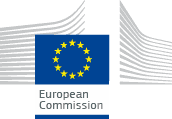Members
 |
Brawijaya UniversityEast Java |
|
Outline This date was later promulgated as UB's anniversary (specifically called Dies Natalies among Indonesian academic society members). Previously, Universitas Brawijaya was publicly known with acronym of UNBRA and then UNIBRAW. On Universitas Brawijaya Senate meeting on March 17, 2008, UB was inaugurated as the official acronym of Universitas Brawijaya. The Hymn of UB was composed by a student of the Faculty of Veterinary and Animal Husbandry called Yanardhana in 1963, while the Mars of UB was composed by Lilik Sugiarto in 1996. Both songs are still frequently sung up to this day. UB campus is situated in the city of Malang, East Java, in a strategic location can easily be reached by public transportations. With trees growing in all corners of the campus and the cool air of Malang, UB indeed is a very fresh campus. As a city of education, Malang has been developing rapidly. This seems to be inseparable from the glory of East Java in the past. [detail] --> |
|
 |
Faculty of Engineering
|
| Outline Gadjah Mada University (UGM) is an Indonesian public research university located in Yogyakarta, Indonesia, founded on December 19, 1949. UGM is the oldest and largest institution of higher learning in Indonesia. Gadjah Mada has been considered to be one of the most prestigious universities in Indonesia, comprises of 18 faculties, 68 undergraduate study programs, 23 diploma study programs, 104 master and specialist study program, and 43 Doctorate study programs. It has approximately 55,000 students, 1,187 foreign students and 2,500 faculty members currently. The vision of UGM is to be an excellent and innovative world Class Research University, imbued with nation's cultural values based on Pancasila as the state ideology and dedicated to the nation's interest and humanity. The Mission is to carry out education, research and community service as well as preservation and development of knowledge that is excellent and useful for society. UGM is creating conducive environment for the continuity of the learning process. These efforts are pursued in the context of developing multidisciplinary collaborations and responding to ecological and environmental issues in order to achieve the vision of the university. Some of the steps are promoting action research in disaster mitigation and implementing socio-preneurial and technical approach for disaster risk reduction. Our wide range of collaboration experiences with similar education institutions, research institutes, government agencies, NGOs and industry has enabled UGM to facilitate intensive collaborations in promoting the disaster risk reduction effort in Indonesia. [detail] --> |
|
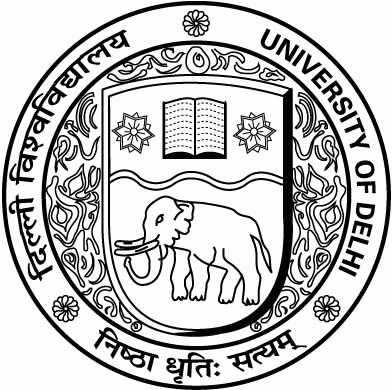 |
Department of Geography, Delhi School of Economics
|
| Outline The department traces its origin to October 1959, when under the initiative of Professor V.K.R.V. Rao, the then Vice-Chancellor of the University and an eminent Economist, a Department of Human Geography was established as a constituent of the Delhi School of Economics. Professor George Kuriyan, a renowned Geographer of India at that time, was the first Professor and founder of the department. In 1966, Professor V.L.S. Prakasa Rao took over from him and guided the department until 1973. Since then, the department acquired a name and a distinctive identity in India and abroad. It draws students from all over India as well as abroad. The department has expanded many times over since 1973. The name of the department was changed to the Department of Geography in 1976 to indicate the widening scope of teaching and research activity in physical and human aspects of Geography. The Department has evolved many new courses, which have been widely acclaimed as the frontiers in Geography. The Faculty members undertake research projects from various agencies including University Grants Commission, Indian Council of Social Science Research, Council for Scientific and Industrial Research, Indo-Canadian Shastri Institute and Ministries of Government of India, which include Indian Space Research Organization, Department of Science and Technology and the Planning Commission.
Engage with national and international Geography Associations occupying post of Vice-President, IGU and Secretary General, NAGI. [detail] --> |
|
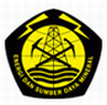 |
Geological Agency (GA), Ministry of Energy and Mineral Resources of the Republic of IndonesiaBandung |
| Outline The Geological Agency (GA) was initially formed during the Dutch colonialism era in the 18th century and was called as Kantoor van het Mijnwezen. In 1850, the name was transformed into Dienst van het Mijnwezen. In 2005, it was finally called as the Geological Agency under the Ministry of Energy and Mineral Resources (MEMR) of the Republic of Indonesia. Based on the decree of MEMR dated 18 November 2010, the Geological Agency (Echelon-I) consists of five Centers (Echelon-II), namely the Secretariat of Geological Agency (SGA), the Center for Geological Resources (CGR), the Center for Volcanology and Geological Hazard Mitigation (CVGHM), the Center for Groundwater Resource and Environmental Geology (CGREG), and the Center for Geological Survey (CGS). The CVGHM was established to conduct research, investigation, engineering recommendations, and services in the field of volcanology and geological hazard mitigation. In performing its duties, the CVGHM performs several functions including (a) the preparation of technical policy development, norms, standards, procedures, and criteria, as well as plans and programs in the field of volcanology and geological disaster mitigation; (b) the implementation of research, investigation, engineering, thematic mapping and analysis of geological disaster risk, as well as early warning of volcanic activity and potential of ground movement and the provision of technical recommendations on geological disaster mitigation; (c) coaching functional of volcano watchers or observers; (d) monitoring, evaluating and reporting the implementation of research, investigation, engineering, thematic mapping and geological disaster risk analysis, as well as early warning of the volcanic activity and the potential ground movement and the provision of technical recommendations geological disaster mitigation; and (e) the administration. The organization structure of the CVGHM consists of four sections, which are: (a) Section of Volcano Monitoring and Investigations (observing 67 active volcanoes by 70 volcano observatories, estimate and publish the states or level of volcanic activity, providing technical recommendations within each states of volcanic activity, publishing disaster-prone area maps, topographic maps , geological map, and providing counseling. [detail] --> |
|
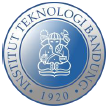 |
Research Center for Disaster Mitigation, Institut Teknologi Bandung (ITB)Bandung |
| Outline Research Center for Disaster Mitigation, under the coordination of Institute for Research and Community Service - Institute of Technology Bandung, was established since 2003 with the name of Research Group on Disaster Mitigation and then changed into Center for Disaster Mitigation (in 2005) before its current name. The change of name in 2011 brought wider authority and responsibility. The missions of RCDM ITB now are to enhance fundamental and applied research activities, which are able to anticipate, respond to and mitigate the disaster risk; to promote fundamental and applied research results that can strengthen the policy development in disaster management in order to achieve sustainable development; and to support the formation of disaster mitigation expert-communities in Indonesia through education. Research Area: RCDM ITB is a multidiscipline area. Many experts from many expertise, such as seismology, active tectonic, tsunami, infrastructure, geodesy, geology, volcanology, disaster management, regional policy, technology failures, and disaster instrument, which is represented by board of researcher. Besides, the center is also supported by Advisory Board, which consisting of respected head of several institutions related with disaster mitigation. As part of university, the research implemented by RCDMP ITB are focused in three main tasks, i.e. education, research and community services through community-based disaster mitigation activities to increase the awareness of community. [detail] --> |
|
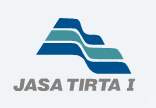 |
Jasa Tirta I Public Corporation (PJT I)Malang |
| Outline Jasa Tirta Public Corporation was established as a state-owned company with a specified concensus in rendering water services and performing O&M activities based on water service fee abstracted from the users. The corporation was established under the Government Regulation No. 5 of 1990. To adapt further to the responsibilites and assignments, the regulating basis of Jasa Tirta I Public Corporation (PJT I) was twice ammended. Firstly, in 1999, by the Government Regulation No. 93 of 1999, in order to strengthen the organization and permit its jurisdiction to extend to other basins; and recently by the Government Regulation No. 46 of 2010. The objective and goal of PJT I is take part and support the Government policy and program on economic sector and national development in general, and particularly on business of water resources and its management, as well as optimization of PJT I's resources to produce goods and services based on healthy corporation management principles. In order to achieve the objective and goal, PJT I conducts main business activities: (1) services to provide bulk water for drinking water, industry, agriculture, flushing, port, electric power generation and others; (2) provide water power to generate electricity for the State Electricity Company; (3) generate and distribute electric power and drinking water, perform consulting in water resources fields, heavy equipment rental and water quality laboratory services, and (4) develop other water-related services including piped domestic supply at specified scales. PJT I in-charged in managing the water resources in 40 rivers (including the Brantas River) of the Brantas River Basin and to operate, maintaining, and managing the major infrastructure in these rivers. In 2000, the corporation was authorized to undertake water resources management activities within 25 rivers of the Bengawan Solo River Basin (an inter-provincial river basin lying in Central and East Java Provinces). In 2014 the corporation was authorized to undertake water resources management activities including controlling of water destructive forces, in Serayu Bogowonto and Jratunseluna River Basins in Central Java and Toba Asahan River Basin in North Sumatera. [detail] --> |
|
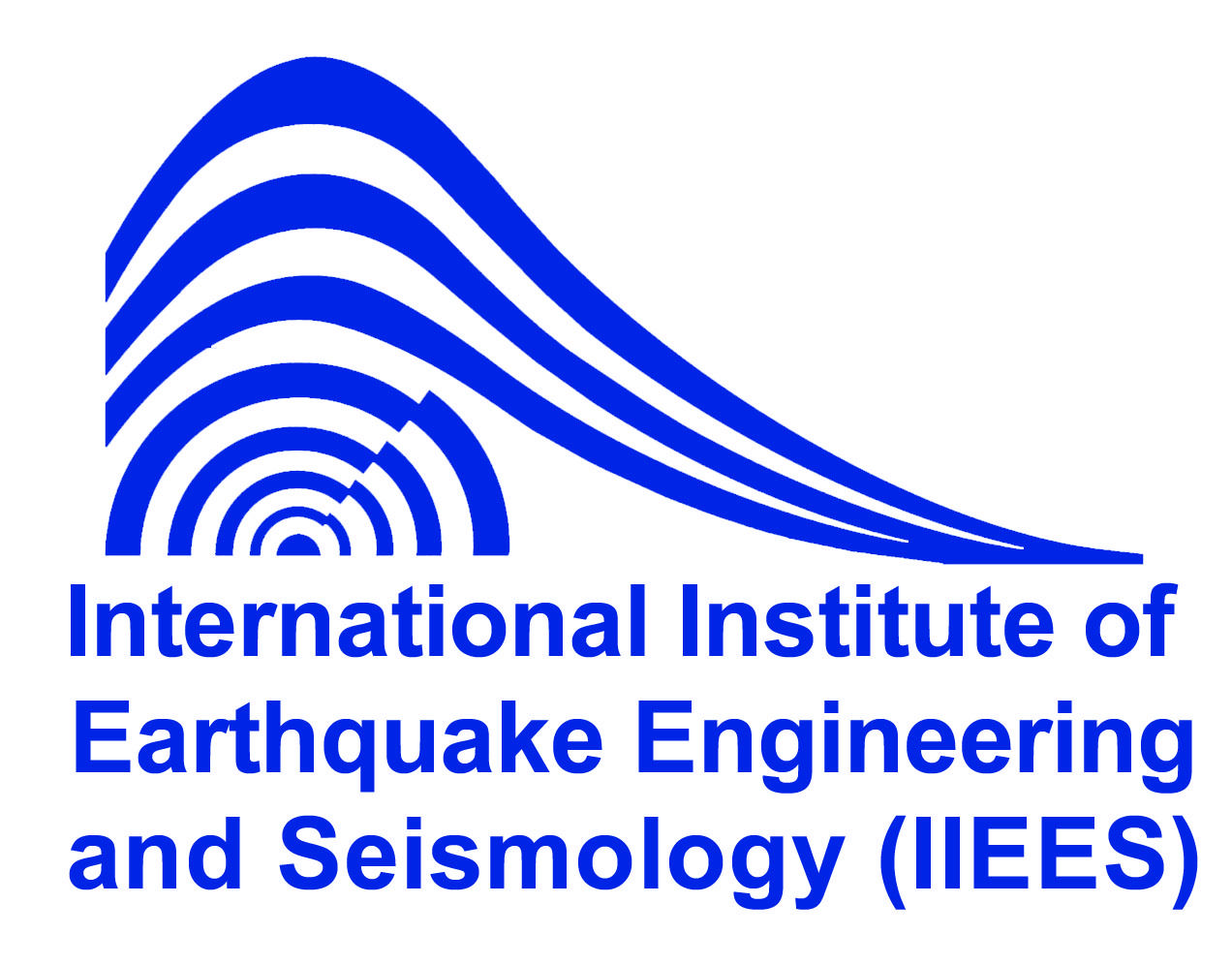 |
International Institute of Earthquake Engineering and Seismology (IIEES)Tehran |
| Outline Iran, being located between two Arabian and Euro-Asian tectonic plates, has experienced several destructive earthquakes, leaving heavy causalities and serious deterioration in different periods of its history. Over 130 severe earthquakes happened in the 20th century in this country, leaving socio-economic losses and long-lasting effects, indicate the seismicity and vulnerability of this country. Unfortunately, during some of these disastrous natural events even the invaluable evidences of ancient Persian culture have been flattened to the ground. All the aforementioned facts confirm the crucial necessity of being concerned about seeking a remedy in order to prevent and diminish these effects. Regarding high seismicity, vulnerability and high seismic risk of this region, International Institute of Seismology and Earthquake Engineering (IIEES) was established in November 1989 following the suggestion of 24th UNESCO General Conference and approval of Iranian government "Council of Higher Education Development" based on the investment of Iranian experts in the earthquake engineering. IIEES is composed of different research departments, including Seismology, Geotechnical Engineering, Structural Engineering, Risk Management, Graduate Studies, Information Technology, and International Relations. [detail] --> |
|
Iran - Natural Disasters Research Institutes (NDRI)
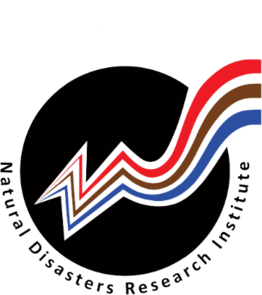 |
Natural Disasters Research Institute (NDRI)Tehran |
|
In the aftermath of the disastrous Gilan and Zanjan earthquake in 1990, the Technical Capacity Mobilization Office of Iran was established for the reconstruction of the affected areas in cooperation with the United Nations Development Programme (UNDP) and the United Nations Human Settlements Programme (UN-Habitat) under the supervision of the Housing Foundation of Islamic Revolution. By ending the World Bank's loan and approving a new statute in 1993, the Centre for Natural Disasters Mitigation Studies of Iran was established and continued its activities until 1998. In 1998, the Centre was renamed to Natural Disasters Research and Study Centre. As a response to a national need in conducting research on natural disasters, the Centre's statute was revised in 2003. Following the permit issued by the Ministry of Science, Research and Technology and approved by the Higher Education Development Council, the Centre was transformed to the Natural Disasters Research Institute to address these goals: |
|
Iran - Soil Conservation and Watershed Management Research Institute (SWCMR)
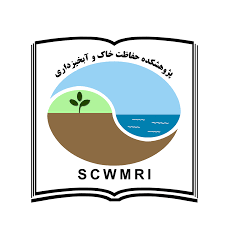 |
Soil Conservation and Watershed Management Research Institute (SCWMRI)Tehran |
|
The Ministry of Jahad-Agriculture, deputy of Research and Education, Soil Conservation and Watershed Management Research Institute (SCWMRI) with the main mandate of research on integrated watershed management is founded in 1993. The main field of activity is to conduct research in soil erosion and sediment yield, soil conservation, watershed management, flood management and exploitation, river engineering, coastal protection, hydrology and water resources development, aquifer management, climate change and agricultural drought impacts management. The SCWMRI proudly recognized as the focal institute in watershed management in Iran, enjoys having cooperation of 160 academic and scientific staff, researchers, professional engineers and qualified technicians carrying out applied researches in the above-mentioned fields. There are 26 provincial divisions and 37 research stations conducting pilot projects across the country. Research Objectives
[detail] --> |
|
Iran - University of Tehran
 |
College of Agriculture and Natural Resources-Environmental changes Institute
|
|
Being the best in Iran, the University of Tehran has been ranked as one of the top universities in Asia.The foundation of the College of Agriculture & Natural Resources (UTCAN), goes back to the year 1900, when it was first established as "School of Agriculture". 120 years of education, research and policy-making, has turned UTCAN into a pioneering and leading focal point in Iran and also in Asia. UTCAN is honored to have former Minister of Agriculture, Minister of Economy, Acting-Minister of Science, Parliament member, President of the University of Tehran and other great leaders among its faculty members. UTCAN, with more than 240 eminent faculty members. 4500 Students are currently studying in 148 majors and specializations in 17 departments. Many regions of the world are increasingly facing challenges when it comes to management of resources and environmental changes and finding solutions for those related problems. The nature of these challenges differs from one location to another. Environmental changes which result in floods and droughts as well as long term impacts of climate change on different elements of environment can cause significant economic losses to various regions and nations and also increase the risk of disasters. We plan to establish a specific institute on disaster risk management and environmental changes in 2019, but by then all activities are at UTCAN level.
To produce technical publications and other media items related to the activities [detail] --> |
|
 |
National Knowledge and Research Center for Emergency Readiness, University of HaifaHaifa |
| Outline The National Knowledge and Research Center for Emergency Readiness with eighty-five researchers, was established in January 2018 by the Israel Ministry of Science and Technology and the National Emergency Management Authority (NEMA) of the Ministry of Defense. Core institutions involved are University of Haifa, the Technion and the Hebrew University, together with researchers from Rafael Advanced Defense Systems, Rambam Hospital, Tel Hai College, and the Israel School for Humanitarian Aid; the municipality of Haifa and NATAN International Humanitarian Aid. The Center's mission is to provide a state-of-the-art scientific research institute to serve as a think-tank for policy framers, decision-makers, the academic community and practitioners from all sectors. The two intertwined functions of the Center are 1) independently generated, cutting-edge and multi-disciplinary research, and 2) solicited real-time response to requests by NEMA, government ministries, elected officials, NGOs and other stakeholders. The current activity is a research gap assessment in the eight disciplinary groups (Social Science; Public Health and Emergency Medicine; Welfare and Social Work; Engineering, Technology, and Planning; Risk Assessment and Management; Environment; Law; and Public Policy) which culminates in September with a prioritized research agenda whose emphasis will be multi(trans)-disciplinary in nature. According to the prioritization, research projects will be funded beginning in November 2018. Some of the projects will be of a comparative nature and be conducted together with international partners. [detail] --> |
|
 |
Global Earthquake Model (GEM) FoundationPavia |
| Outline The GEM Foundation is a non-profit, public-private partnership that drives a global collaborative effort to develop scientific and high-quality resources for transparent assessment of earthquake risk and to facilitate their application for risk management around the globe. Assisted by an initiative of the OECD's Global Science Forum, GEM was formed in 2009 as a non-profit foundation in Pavia, Italy, funded through a public-private sponsorship with the vision to create a world that is resilient to earthquakes. GEM's mission is to become one of the world's most complete sources of risk resources and a globally accepted standard for seismic risk assessment; and to ensure that its products are applied in earthquake risk management worldwide. [detail] --> |
|
|
|
European Commission, Joint Research CentreIspra VA |
| Outline As the Commission's in-house science service, the Joint Research Centre's mission is to provide EU policies with independent, evidence-based scientific and technical support throughout the whole policy cycle. Working in close cooperation with policy Directorates-General, the JRC addresses key societal challenges while stimulating innovation through developing new methods, tools and standards, and sharing its know-how with the Member States, the scientific community and international partners. As the Commission's in-house science service, the Joint Research Centre's mission is to provide EU policies with independent, evidence-based scientific and technical support throughout the whole policy cycle. Its work has a direct impact on the lives of citizens by contributing with its research outcomes to a healthy and safe environment, secure energy supplies, sustainable mobility and consumer health and safety. The JRC draws on over 50 years of scientific work experience and continually builds its expertise based on its seven scientific institutes, which host specialist laboratories and unique research facilities. They are located in Belgium (Brussels and Geel), Germany, Italy, the Netherlands and Spain. While most of our scientific work serves the policy Directorates-General of the European Commission, we address key societal challenges while stimulating innovation and developing new methods, tools and standards. We share know-how with the Member States, the scientific community and international partners. The JRC collaborates with over a thousand organisations worldwide whose scientists have access to many JRC facilities through various collaboration agreements. [detail] --> |
|
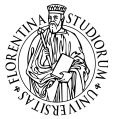 |
Department of Earth Sciences (DST)
|
| Outline The Earth Sciences Department of the University of Firenze has been recently recognized as National Centre of Excellence for scientific research and international relationship in the Geosciences field. The department has 42 units of academic staff, 21 units of administrative staff and 130 non-permanent staff such as PhD students, assistant researchers. The Earth Sciences Department of the University of Firenze is, since 2004, the official Centre of Competence of the Italian Civil Protection for Remote Sensing and Geohazards (Directive of the Italian Prime Minister of 27 February 2004; Decree of the Head of the Italian National Civil Protection Department no. 252 of 25 January 2005). In 2008 it was entitled "World Centre of Excellence on Landslide Risk Reduction 2008-2011" by International Programme on Landslide (IPL). This recognition was confirmed in 2011 and in 2014 for the third consecutive time. The Geohazards research group, which is established at Earth Sciences Department of the University of Firenze it is one of the largest centres for scientific and technological services on geohazards in Italy, currently composed by 51 full-time employees (Figure 1). The group counts 4 professors, 3 researchers, 7 technicians, 19 post-doc fellows, 15 PhD students and 3 administratives. It is the biggest centre in Italy in the field of Geohazards and Engineering Geology. [detail] --> |
|
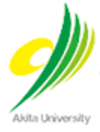 |
Research Center for Potential Development of
|
| Outline The center was established in January 2006 as one of research centers attached to the Graduate School of Engineering and Resource Science to make our community safe and peace from natural disasters, and is composed of the following six research fields : 1) Earthquake disaster, 2) Tsunami disaster, 3) River disaster, 4) Slope disaster, 5) Volcanic disaster and 6) Information and plan for disaster prevention and mitigation. The center aims to promote fundamental and applied studies that contribute to prevention and mitigation of natural disasters, to study and support regional disaster prevention and mitigation, and to educate and spread the knowledge of natural disasters on the general public, the local government staff concerned, the company personnel concerned and so on through lecture meetings, forums, seminars, symposiums, etc. In order to perform these aims, the center actively promotes cooperative researches and projects with national and local governments, companies, local communities and so on. Postgraduate students may study in any of above fields towards the master's and doctor's degrees under the supervision of the center staff. |
|
 |
Asian Disaster Reduction Center (ADRC)Kobe |
| Outline The Asian Disaster Reduction Center was established in Kobe, Hyogo prefecture, in 1998, with mission to enhance disaster resilience of the member countries, to build safe communities, and to create a society where sustainable development is possible. The Center works to build disaster resilient communities and to establish networks among countries through many programs including personnel exchanges in this field. |
|
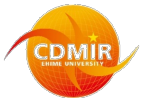 |
Center for Disaster Management
|
| Outline The Center for Disaster Management Informatics Research (CDMIR) at Ehime University was established in 2006. In the beginning, it was composed of only four research divisions including Disaster Medical Care Research Division, Regional Disaster Prevention Research Division, Infrastructures for Disaster Prevention Division, and Division for Disaster Information Network System in Asian Region, but in 2010, Nankai-Trough Earthquakes Research Division was also added so as to revisit the disaster preparedness plan against the widespread damage during Nankai Earthquake. More recently in 2014, the number of research divisions has increased to six with the addition of Urban Design Research Division. CDMIR objectives are being met basically through the following two types of activities: (1) Support the local communities with disaster mitigation plans in Ehime (2) Strengthen collaborative relationship for disaster mitigation in Asia As a local disaster mitigation support, CDMIR has been annually convening Ehime Disaster Management Forums since 2009. The forum consists of public, private, and academia groups including the mayors of 20 cities and towns of Ehime prefecture. In 2011, the Association of Regional Disaster-Prevention Research in Ehime was established under the initiatives of CDMIR, to study the diverse disaster prevention and mitigation issues from a regional perspective. As one of the natural disaster hotspots of Asia, Ehime University has signed academic exchange agreement with five universities and colleges in Nepal that include Nepal Engineering College, Tribhuvan University, Kathmandu University, and others. In 2006, a satellite office of Ehime University was also placed in Kathmandu Nepal to facilitate various Nepal-based disaster management activities of CDMIR. Since then, CDMIR has been conducting various research and training activities aimed at supporting disaster mitigation efforts of Nepal. International symposiums and seminars on disaster mitigation/management issues are also frequently organized. The overall goal of CDMIR is to promote regional disaster management as a part of societal development to foster disaster-resistant and disaster-resilient communities for Ehime, for Shikoku, for Japan, and for Asia. |
|
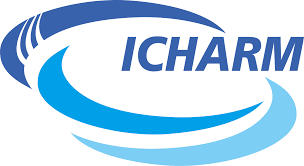 |
International Centre for Water Hazard and
|
| Outline The mission of ICHARM is to serve as the Global Centre of Excellence for Water Hazard and Risk Management by, inter alia, observing and analyzing natural and social phenomena, developing methodologies and tools, building capacities, creating knowledge networks, and disseminating lessons and information in order to help governments and all stakeholders manage risks of water-related hazards at global, national, and community levels. To cope with major water-related disasters, such as floods, it is important and essential to strengthen not only individual but also organizational capacity in disaster management, because there is always limitation for what each person can do. Well aware of that fact, ICHARM conducts the following training courses which can contribute to organizational capacity development through training individuals. * Comprehensive Management of River and Dam (JICA) * Making JICA Training Program: Capacity Development for Flood Risk Management with IFAS (JICA) * Water-related Risk Management Course of Disaster Management Policy Program (JICA & GRIPS) |
|
 |
International Consortium on Landslides (ICL)Kyoto |
| Outline The International Consortium on Landslides (ICL) created at the Kyoto Symposium in January 2002 is an International non-governmental and non-profit scientific organization. The ICL established the International Programme on Landslides (IPL) as a programme of ICL by 2006 Tokyo Action Plan. The International Programme on Landslides (IPL) was launched to create a new global multidisciplinary programme on landslides at the first session of Board of Representatives of ICL (BOR/ICL) at UNESCO Headquarters, Paris, in November 2002. The Programme was developed to a global cooperation programme through the thematic session on landslides in the second United Nations World Conference on Disaster Reduction (WCDR), Kobe, Japan in January 2015. The IPL was defined and established by the 2006 Tokyo Action Plan "Strengthening Research and Learning on Landslides and Related Earth System Disasters for Global Risk Preparedness", the output of the Tokyo Round Table Discussion "Strengthening Research and Learning on Earth System Risk Analysis and Sustainable Disaster Management within UN-ISDR as Regards Landslides" held at the United Nations University, Tokyo, from 18th to 20th January, 2006. In 2006, the International Consortium on Landslides exchanged Memorandum of Understandings to promote IPL with each of ICL supporting organizations: |
|
 |
Crisis & Security Management
|
| Outline The Crisis and Security Management Research Center was established in April 2008. It aims to contribute to the safety and security of Local communities by developing advanced academic, technological and educational research projects for protecting human lives and property against man-made disasters such as terrorism, accidents and crime, as well as natural disasters such as earthquakes, tsunami, storm surge, and flooding. |
|

